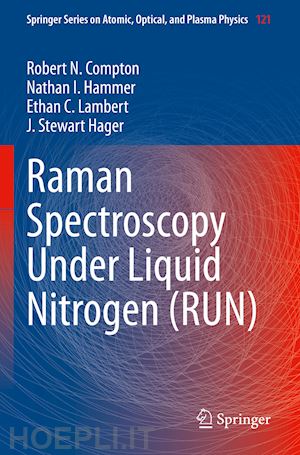
Questo prodotto usufruisce delle SPEDIZIONI GRATIS
selezionando l'opzione Corriere Veloce in fase di ordine.
Pagabile anche con Carta della cultura giovani e del merito, 18App Bonus Cultura e Carta del Docente
Robert N. Compton received degrees in Physics from Berea College (BA), the University of Florida (MS) and the University of Tennessee (PhD). He was a Senior Corporate Fellow at the Oak Ridge National Laboratory from 1965 to 1995 and was a Professor of Physics and Zeigler Professor of Chemistry at the University of Tennessee until retirement in 2015. He was a Visiting Professor at the University of Aarhus, University of Paris, and the FOM Institute in Amsterdam. In 2001, he was an Erskine Fellow at the University of Christchurch, New Zealand. As an Erskine Fellow he also presented eight two-hour lectures on the Manhattan Project to the city of Christchurch. He is a Fellow of the APS, AAAS, and OSA. Compton received the Beams Award from the American Physical Society and the Meggers Award from the Optical Society of America. His research interests include negative ions, laser spectroscopy, and molecular chirality. He has published one other book with MA Duncan “LaserExperiments in Chemistry and Physics” (Oxford).
Dr. Nathan I. Hammer received an Honors B.S. in Chemistry Degree from the University of Tennessee in 1998 and a Ph.D. in Physical Chemistry & Chemical Physics at the University of Tennessee in 2003. His doctoral research focused on resonant electron transfer processes, the creation and manipulation of very weakly-bound (0.5-50 meV) negative ions, and the interaction of light with chiral systems. He was postdoctoral researcher from 2003 to 2005 at Yale University, where he studied the spectroscopy of fundamental aqueous systems. This work resulted in 15 publications, three of which were in Science magazine, and was listed among Science’s Top 10 Breakthroughs of 2004. Dr. Hammer then served as an Intelligence Community Postdoctoral Fellow in the Department of Chemistry at the University of Massachusetts, Amherst (2005-2007). At UMass, Dr. Hammer studied a number of fundamental nanoscale systems using single molecule spectroscopic techniques with publications in journals including Science and The Journal of the American Chemical Society. Important accomplishments include describing blinking suppression in quantum dot nanostructures, probing the chiroptical response of single molecules, and unraveling the origins of spectroscopic defects in organic light emitting diode (OLED) devices. Dr. Hammer joined the University of Mississippi Department of Chemistry and Biochemistry in 2007. He received a Faculty Early Career Development (CAREER) Award from the National Science Foundation (NSF) in 2010 to spectroscopically track the evolution of noncovalent interactions from the single molecule level to the condensed phases. As part of this grant he developed the department’s award-winning summer research program for undergraduates. Professor Hammer was named the Margaret McLean Coulter Professor of Chemistry and Biochemistry in 2020. He received the College of Liberal Arts Award for Research, Scholarship and Creative Achievement for Senior Faculty in 2018 and the Faculty Achievement Award in 2021.











Il sito utilizza cookie ed altri strumenti di tracciamento che raccolgono informazioni dal dispositivo dell’utente. Oltre ai cookie tecnici ed analitici aggregati, strettamente necessari per il funzionamento di questo sito web, previo consenso dell’utente possono essere installati cookie di profilazione e marketing e cookie dei social media. Cliccando su “Accetto tutti i cookie” saranno attivate tutte le categorie di cookie. Per accettare solo deterninate categorie di cookie, cliccare invece su “Impostazioni cookie”. Chiudendo il banner o continuando a navigare saranno installati solo cookie tecnici. Per maggiori dettagli, consultare la Cookie Policy.